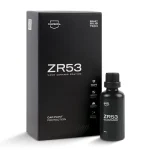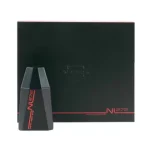For most, the idea of using the old technology of carnauba wax to coat vehicles was mainly for aesthetic reasons.
People wanted a nice clean, shiny looking car and most did not think about surface protection or scratch-resistance of the wax, as long it gave it a beautiful shine than the product was assumed to be excellent.
As the technology improved, the wax coating began to get better on how it protects the surface;
however,
the majority of the users were using the wax for its ability to provide a decent shine to the surface.
As the products used in the detailing business began, the cost of automobiles started to increase, and the auto body paint cost has risen, car owners eventually wanted an application to provide their vehicles more protection and not just a simple shine.
Arrival of Car Ceramic Coating
In the early part of the 1980s, the new concept was beginning to develop with ceramic coating and down the road using a new technology called nanotechnology, which was starting to make its presence in developing ceramic coating to provide better protection than the previous generation of waxes.
In the ’90s and through today, the ceramic coating seems to take charge in the surface protection of automobiles, motorcycles, trucks, RV’s, and aircraft.
Car Ceramic coating made with using nanotechnology does indeed provide a considerable amount of protection when compared with the traditional car wax.
How nanotechnology works with protecting the surface is a bit complicated process to explain; however, the gist of the matter is the bonded molecules within the formula containing polymers cross-link, and they form to structure nanocoating.
One of the primary reasons as to why someone treats the surface of their vehicle with a ceramic coating is for scratch protection.
The surface of the car is not perfect, and no matter what brand or the price tag of the vehicle is, it will eventually have minor and, in some cases, deep scratches on them.
These scratches are caused by pebble rocks, road salt, when a parked car next to you hits your car while opening the door, or by shopping carts, whatever it may be the cause, it will have an impact on the aesthetics of your vehicle.
Unless if you are super meticulous and have a keen eye on detail and can spot a micro change on the surface, the chances are you won’t recognize the scratches on your daily routine driving.
However, there will be scratches that will be much easier to identify, especially the ones where they occur in a spot where you most interact with, like the driver side door.
Superior Car Paint Protection
Most nano ceramic coatings have a 9H scratch resistance – which translates to surface ability to prevent scratches from the hardest pencil.
If you bang the hood of your vehicle with a hammer, nanoceramic coatings are not going to stop your car from getting scratches.
However, nanocoating will provide the best protection against normally expected scratches.
Nanocoating does more than just protecting the surface from scratches.
Just like with carnauba wax, ceramic coatings bring a fantastic long-lasting shine to the vehicle surface, along with water repellency and stain protection against elements of nature such as bird droppings and will make cleaning the exterior of your vehicle faster.
Durability is another concept to keep in mind.
When comparing ceramic coating with traditional wax, nanocoating will last longer and protect an extended amount of time.
It is recommended if you are intending on treating the surface of your vehicle with ceramic coating, to research and find a product that contains the formula to protect at a superior level and lasts a minimum of 3 years.


